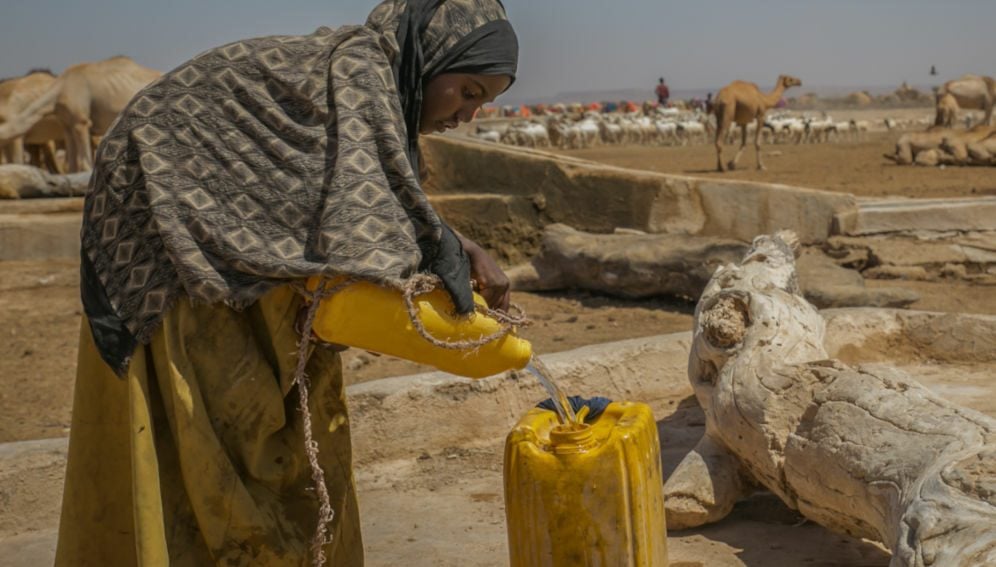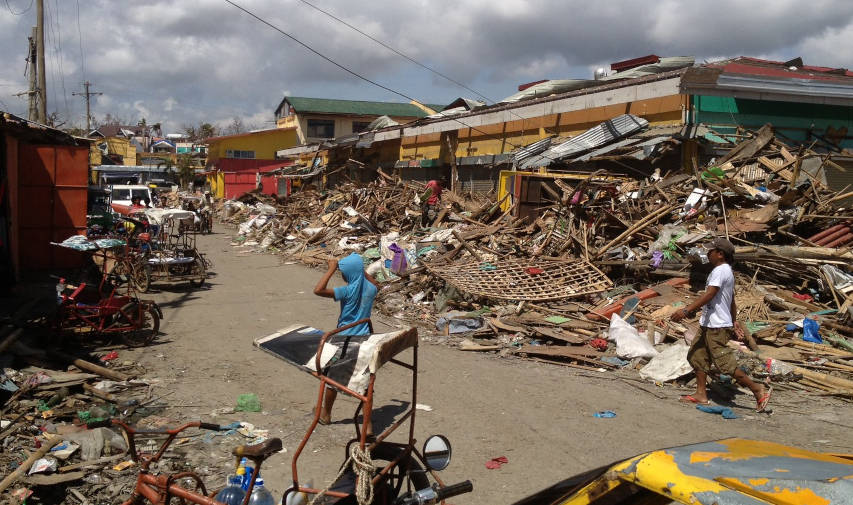02/11/22
Climate change and the future: facts and figures

By: Fiona Broom
Send to a friend
The details you provide on this page will not be used to send unsolicited email, and will not be sold to a 3rd party. See privacy policy.
World leaders have been told that their failure to act on climate change will mean critical temperature rise limits will be breached by more than 1 degree Celsius this century.
There is currently no “credible pathway” to hold temperature rise to 1.5 degrees – as leaders promised to do in 2015 – the United Nations Environment Programme (UNEP) warned in its 2022 emissions gap report.
Pledges made at last year’s COP26 conference in Glasgow and in the 12 months since then would lead to greenhouse gas emissions reductions of less than one per cent of projected 2030 emissions, according to UNEP. This means a global temperature rise of between 2.4 and 2.6 degrees is expected by 2100, even if those commitments are fulfilled.
“We had our chance to make incremental changes, but that time is over,” said UNEP executive director Inger Andersen. “Only a root-and-branch transformation of our economies and societies can save us from accelerating climate disaster.
“It is a tall, and some would say impossible order, to reform the global economy and almost halve greenhouse gas emissions by 2030, but we must try.
“Every fraction of a degree matters: to vulnerable communities, to species and ecosystems, and to every one of us.”
The UNEP report is one of many in an avalanche of analysis released ahead of COP27, the 2022 UN climate summit to be held in Egypt this month.
Emissions rising
Greenhouse gas emissions have reduced in a handful of regions, carbon data analysis shows, but globally emissions continued to increase between 1990 and 2019 – emissions took a dip in the early days of the COVID-19 pandemic as air and road travel, and industry shut down.
Source: Our World in Data, (CC BY 4.0)
While greenhouse gas emissions are often referred to as ‘anthropogenic’ – caused by humans – it is the wealthiest countries and individuals that are responsible for historic and current emissions.
Since 1990, the poorest 50 per cent of the world population was responsible for just 16 per cent of all emissions growth, while the richest 1 per cent was responsible for 23 per cent of the total growth in emissions. Data analysis by economist Lucas Chancel of the Paris School of Economics’ World Inequality Lab, published in Nature Sustainability in September, found that the bulk of the 1 per cent’s emissions came from their investments, rather than their consumption.
Countries in Sub-Saharan Africa have the lowest average carbon footprint, while the ultra-rich Luxembourg and the United States have the highest, according to a study led by the University of Groningen, the Netherlands.
Climate costs rising
In 2009, wealthy high-emitting countries committed to provide US$100 billion per year by 2020 for developing countries to mitigate against and adapt to climate change, and in 2015 this unfulfilled promise was repeated and extended to 2025.
But it has still not been met. And much of the finance that has been made available has come in the form of loans, rather than grants. Public finance accounted for the majority and increased year-on-year since 2015, but private finance experienced variations and decreases, according to analysis published in July by the OECD, an alliance of 38 market-driven economies.

Damage caused to communities on the Philippines’ eastern shore by Typhoon Haiyan in 2013. Credit: Torben Bruhn, (CC BY-NC-ND 2.0).
The OECD found that US$83.3 billion in climate finance was provided to developing countries in 2020. The majority of the funding was for climate mitigation, and primarily targeted at Asia and middle-income countries, the OECD says.
While the OECD says that funding for adaptation is on the increase, the non-profit research organisation the World Resources Institute (WRI) says that more funding is needed to fulfil a further commitment made last year by high-income countries to provide US$40 billion in adaptation finance by 2025.
In October, more than 250 health journals worldwide simultaneously published an editorial that urged world leaders to deliver climate justice for Africa. The 16 authors from leading biomedical journals across Africa said that achieving the US$100 billion was now “globally critical if we are to forestall the systemic risks of leaving societies in crisis”, while additional resources for loss and damage must now also be introduced.
Financing for the irreversible damage caused by climate change – known and loss and damage – is gaining attention, and the issue is expected to be given a major push by low- and middle-income countries and vulnerable communities at COP27. The countries least responsible for historic emissions are bearing the brunt of climate change, and they want wealthy countries to make financial restitution.
Since 2017, about half of all UN appeals for climate disaster support have gone unmet, leaving countries that can least afford it to find US$33 billion to recover from floods, fires and other extreme weather. The analysis from international charity Oxfam also found that for every US$2 requested by a country facing a climate catastrophe, they received around US$1.
Environment leader Wanjira Mathai tells SciDev.Net podcast Africa Science Focus that COP27 will be crucial for Africa’s future.
Systems transitions
Industrial agriculture systems are major contributors of greenhouse gases, while food systems globally are responsible for 80 per cent of deforestation, 70 per cent of freshwater use, and the single greatest driver of land-based biodiversity loss, the latest Global Land Outlook from the UN Convention to Combat Desertification (UNCCD) says.
Up to 40 per cent of the planet’s land is now degraded, according to the outlook, which was five years in the making. National pledges to restore 1 billion hectares of degraded land by 2030 would require up to $US1.7 trillion – much less than the US$700 billion spent every year on fossil fuel and agricultural subsidies, according to the UNCCD.
Intensive single-crop production and deforestation generate the bulk of carbon emissions associated with land use change, while nitrous oxides from fertiliser use and methane emissions from livestock make up “the largest and most potent share” of agricultural greenhouse gas emissions, the outlook said.
“What is clear and unequivocal is the need for coordinated measures to meaningfully slow or reverse climate change, land degradation, and biodiversity loss to safeguard human health and livelihoods, ensure food and water security, and leave a sustainable legacy for future generations,” it added.
Fossil fuel end approaching?
Support and governance structures are being set up for the Just Energy Transition Partnership announced at COP26 by South Africa, along with France, Germany, the UK, the US and the European Union. The partnership’s developed economies pledged to mobilise US$8.5 billion over the next three to five years to support South Africa’s transition towards a low-emission economy. An investment plan is expected to be announced at COP27, the WRI said in its COP26 progress report.
The leaders of the G7 countries have launched a similar partnership with India, Indonesia, Vietnam and Senegal, but the WRI says that as yet there are no further details, including the amount of support each country will receive.
But the “golden age of gas” is over, the International Energy Agency (IEA) announced as it released its World Energy Outlook 2022 in the lead up to COP27. While the IEA said that strengthened policies, high near-term prices and energy security concerns would precipitate the end of this “golden age”, it stated that fossil gas would remain “crucial” amid lower pipeline flows to Europe and import demand in Asia.
The energy outlook said that reverberations from Russia’s invasion of Ukraine and the lasting impact on fossil fuel energy policies would see global demand for “every fossil fuel” peaking in 2025.
“Energy markets and policies have changed as a result of Russia’s invasion of Ukraine, not just for the time being, but for decades to come,” IEA executive director Fatih Birol said.
“Even with today’s policy settings, the energy world is shifting dramatically before our eyes. Government responses around the world promise to make this a historic and definitive turning point towards a cleaner, more affordable and more secure energy system.”
This article is part of our Spotlight on ‘Africa’s crisis COP’
This article was produced by SciDev.Net’s Global desk.

